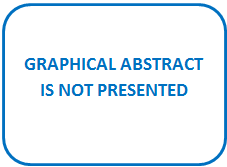Formation of a minimum viable IT project team using the genetic algorithm
DOI:
https://doi.org/10.15587/2706-5448.2023.277930Keywords:
IT project, minimal viable product creation technology, design thinking technology, minimal viable team, empathy, genetic algorithmAbstract
The object of research is the process of forming an IT project team, in which the development technology is based on the technology of creating a minimum viable product (MVP) and design thinking (DT) technology. Such IT projects usually have a high content of innovation and require a special management technique, as well as a special approach to the properties of the project team.
The application of design thinking technology will require project team members to master the property of empathy for the customer's problems. Empathy is a property of the human representational system and cannot be acquired through education or training. If it exists, then this property can be developed thanks to special training. Therefore, there is a problem regarding the formation of the IT project team. The manager who is responsible for forming the team needs to make a decision to choose between the availability of technical competencies of the applicants, the ability to work in a team, and the presence of empathy. In addition to the outlined requirements for applicants, such a team must be self-managed and self-organized. This also adds a whole series of requirements to applicants for the IT project team. Usually, applicants possessing all the necessary properties in full do not exist. Therefore, the manager (expert) will need to make decisions about compromises in meeting all the project's requirements. In addition, the need for labor resources will change during the project life cycle (PLC). It is for this purpose that it is proposed to use a genetic algorithm (GA), which will allow finding a local extremum that will be optimal under the current conditions of the project to solve a multi-criteria problem. This will reduce the subjective component in the process of making project decisions, which in turn will increase the probability of successful completion of IT projects in conditions of uncertainty and dynamic changes.
The proposed method of forming an IT project team can be applied in practice in the form of information technology, to which in the form of a template it will be necessary to enter information about project requirements and the competency map of applicants. As a result, the GA will propose a decision regarding the quantitative and competent composition of the project team.
References
- Brito, S. M., Maldonado Briegas, J. J., Sánchez Iglesias, A. I. (2019). Creative researchers conflicts management. International Journal of Developmental and Educational Psychology. Revista INFAD de Psicología, 1 (1), 49. doi: https://doi.org/10.17060/ijodaep.2019.n1.v1.1384
- Blyzniukova, I. O. (2023). Metod formuvannia kreatyvnoi komandy IT-proiektamy. Visnyk Natsionalnoho tekhnichnoho universytetu «KhPI». Seriia: Stratehichne upravlinnia, upravlinnia portfeliamy prohramamy ta proiektamy, 1 (7), 12–19.
- Blyzniukova, I. O., Danchenko, O. B., Teslenko, P. O., Zarutskyi, S. O. (2021). Kontseptualna model kreatyvnoho upravlinnia komandoiu IT proiektu. R3M-2021. Odesa: IShIR, 81–83.
- Kovalchuk, O. I., Zachko, O. B., Kobylkin, D. S. (2022). Proiekty avtomatyzatsii formuvannia proiektnykh komand v sferi bezpeky. Project, Program, Portfolio Management. P3M-2022. Odesa: IShIR, 1, 48–51.
- Skakalina, E. V. (2018). Innovative concept of control systems by complex distributed systems. Control, Navigation and Communication Systems, 2 (48), 24–29. doi: https://doi.org/10.26906/sunz.2018.2.024
- Timinskyi, O. H. (2007). Deiaki aspekty formuvannia henetychnoho kodu proiektnoho menedzhera u vidpovidnosti do umov proiektu pry portfelnomu upravlinni. Upravlinnia proiektamy ta rozvytok vyrobnytstva, 1 (21), 49–57.
- Alba, E., Francisco Chicano, J. (2007). Software project management with GAs. Information Sciences, 177 (11), 2380–2401. doi: https://doi.org/10.1016/j.ins.2006.12.020
- Chang, C. K., Christensen, M. J., Zhang, T. (2001). Genetic Algorithms for Project Management. Annals of Software Engineering, 11, 107–139. doi: https://doi.org/10.1023/a:1012543203763
- Jiménez-Domingo, E., Colomo-Palacios, R., Gómez-Berbís, J. M. (2014). A Multi-Objective Genetic Algorithm for Software Personnel Staffing for HCIM Solutions. International Journal of Web Portals, 6 (2), 26–41. doi: https://doi.org/10.4018/ijwp.2014040103
- Blyzniukova, I. O., Danchenko, O. B., Teslenko, P. O., Kuvaieva, V. I. (2021). Tekhnolohii dyzain-myslennia v upravlinni komandoiu IT-proiektu. Upravlinnia proiektamy: stan ta perspektyvy. Mykolaiv: Vydavets Torubara V. V., 13–14.
- Henry, J. (2010). Creative management. London.
- Buontempo, F. (2019). Genetic Algorithms and Machine Learning for Programmers. The Pragmatic Programmers, LLC, 234.
- Kaur, G., Bala, A. (2019). An efficient resource prediction–based scheduling technique for scientific applications in cloud environment. Concurrent Engineering, 27 (2), 112–125. doi: https://doi.org/10.1177/1063293x19832946
- Xiong, Y., Huang, S., Wu, M., She, J., Jiang, K. (2019). A Johnson’s-Rule-Based Genetic Algorithm forTwo-Stage-Task Scheduling Problem in Data-Centers of Cloud Computing. IEEE Transactions on Cloud Computing, 7 (3), 597–610. doi: https://doi.org/10.1109/tcc.2017.2693187
- Bettemir, Ö. H., Sonmez, R. (2015). Hybrid Genetic Algorithm with Simulated Annealing for Resource-Constrained Project Scheduling. Journal of Management in Engineering, 31 (5). doi: https://doi.org/10.1061/(asce)me.1943-5479.0000323
- A Guide to the Project Management Body of Knowledge (PMBOK® Guide) (2021). Project Management Institute, Inc.
- Ahmed, R., Shaheen, S., Philbin, S. P. (2022). The role of big data analytics and decision-making in achieving project success. Journal of Engineering and Technology Management, 65, 101697. doi: https://doi.org/10.1016/j.jengtecman.2022.101697

Downloads
Published
How to Cite
Issue
Section
License
Copyright (c) 2023 Iryna Blyznyukova, Pavlo Teslenko

This work is licensed under a Creative Commons Attribution 4.0 International License.
The consolidation and conditions for the transfer of copyright (identification of authorship) is carried out in the License Agreement. In particular, the authors reserve the right to the authorship of their manuscript and transfer the first publication of this work to the journal under the terms of the Creative Commons CC BY license. At the same time, they have the right to conclude on their own additional agreements concerning the non-exclusive distribution of the work in the form in which it was published by this journal, but provided that the link to the first publication of the article in this journal is preserved.







